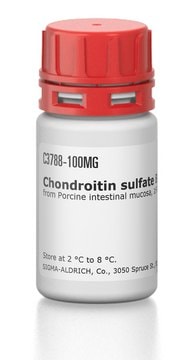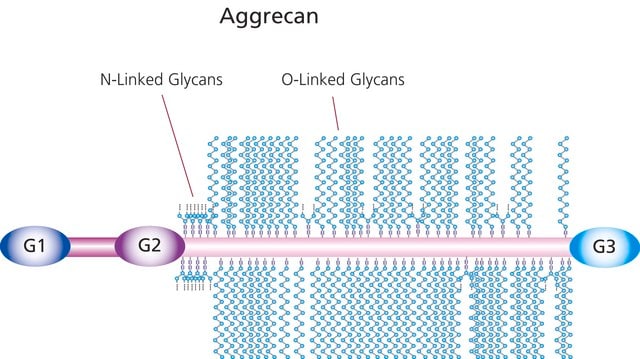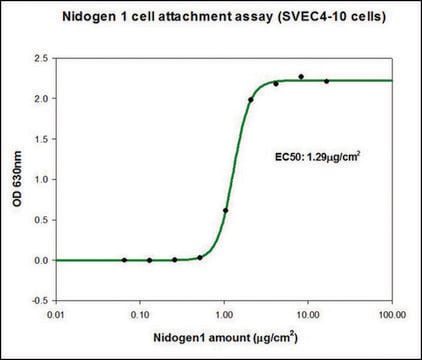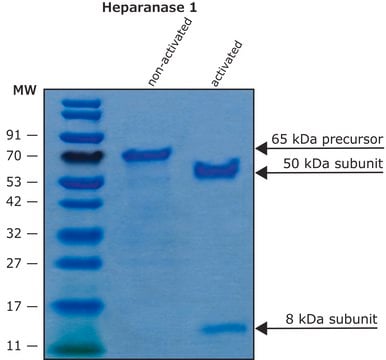H4777
Heparan sulfate proteoglycan
≥400 μg/mL glycosaminoglycan
Synonym(s):
HSPG
About This Item
Recommended Products
biological source
mouse (Engelbreth-Holm-Swarm mouse sarcoma basement membrane)
Quality Level
description
For cell culture use.
Isolated from basement membrane of Engelbreth-Holm-Swarm mouse sarcoma.
Solution in 50 mM Tris HCl, 150 mM NaCl, 1 mM EDTA, 0.1 mM PMSF, pH 7.4, containing ≥400 μg protein per ml.
form
solution
mol wt
≥400 kDa
packaging
pkg of 0.1 mg
concentration
≥400 μg/mL glycosaminoglycan
technique(s)
cell culture | mammalian: suitable
impurities
≥100 μg/mL Uronic acid
NCBI accession no.
UniProt accession no.
Binding Specificity
Peptide Source: Collagen Type IV
Peptide Source: Fibronectin
Peptide Source: Laminin
shipped in
dry ice
storage temp.
−20°C
Gene Information
mouse ... Hspg2(15530)
General description
Application
- in phosphate buffered saline (PBS) and added to fresh citrated blood samples to achieve trauma-equivalent concentrations in a research study
- solid phase binding assay
- for fabrication of extracellular matrix (ECM) microarray slides
Biochem/physiol Actions
Components
Caution
Preparation Note
Storage Class Code
11 - Combustible Solids
WGK
WGK 3
Flash Point(F)
Not applicable
Flash Point(C)
Not applicable
Personal Protective Equipment
Certificates of Analysis (COA)
Search for Certificates of Analysis (COA) by entering the products Lot/Batch Number. Lot and Batch Numbers can be found on a product’s label following the words ‘Lot’ or ‘Batch’.
Already Own This Product?
Find documentation for the products that you have recently purchased in the Document Library.
Customers Also Viewed
Articles
Uncover more about glycosaminoglycans and proteoglycans including the structure of glycosaminoglycans (GAGs), the different types of GAGs, and their functions.
Uncover more about glycosaminoglycans and proteoglycans including the structure of glycosaminoglycans (GAGs), the different types of GAGs, and their functions.
Uncover more about glycosaminoglycans and proteoglycans including the structure of glycosaminoglycans (GAGs), the different types of GAGs, and their functions.
Uncover more about glycosaminoglycans and proteoglycans including the structure of glycosaminoglycans (GAGs), the different types of GAGs, and their functions.
Our team of scientists has experience in all areas of research including Life Science, Material Science, Chemical Synthesis, Chromatography, Analytical and many others.
Contact Technical Service











